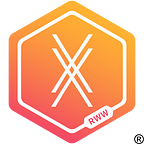The key to unlocking the powers of the RWW will be a form of augmented reality that we call ‘triggers’. Many companies have used triggers in the past that make use of different sensors of the phone in order to create different types of physical user interactions in the real world. For instance, iBeacons that make use of Bluetooth have been all the rage for the past while — you walk near them and a trigger fires. Shazam uses your device’s microphone in order to recognize a sound and to fire a trigger based on it. NFC tags that let us create smart posters that you can tap using your phone are yet another type of trigger, as are QR codes, which you scan using a device’s camera. In the future, computer vision-based AR headsets will turn the world into a continuous trigger fabric in which everything will be interactive.
Unlike past companies that subscribed to a ‘silver bullet’ strategy of trying to rule the world with a single type of limited trigger, we’ve recognized that the world is a complicated place and that with the exception of future AR triggers, no single type is that important.
We’re embracing all sensors and triggers both in mobile devices as well as in the environment to build maximally-interactive physical-digital ecosystems around you. Triggers associated with mobile device sensors will only be one type of input on the RWW. Every card swiper, turnstile, elevator, and smart car will be a source of triggers. Every action on Facebook, Twitter, and Snapchat will be a trigger. The RWW will unify all of these technologies into a single system where any piece of hardware or software can be an input or output to apps created using the Rox programming language.
Our system is designed to be as powerful as possible, taking inputs from infinite triggers, providing infinitely-flexible computations to process those signals, and then to turn them into infinitely-flexible output triggers. Even more importantly, we’re making all of these triggers cheaply and easily available within our programming environment to anyone who wants interactivity in the real world to be part of their app.
You have complete control over these triggers: They can be one-time use or multi-use, they can be geofenced, temporally fenced, and targeted — two different people interacting with the same trigger may receive totally different results.
The strength of this model is that by embracing all of these different triggers, we’ve created an incredibly rich toolbox capable of handling any situation. Regardless of whether you’re reaching your customers on radio, billboard, print, social media, television, or on-site, we always have the right trigger for the job in order to give that marketing medium a digital facelift.
In our vision of the future, there’ll be no such thing as non-digital advertising; it’ll all be digital, it’ll all be interactive, and the user’s mobile device will be the common denominator across all channels. We’ll unify every brand’s whole marketing empire (which currently consists of many different silos) into one integrated digital ecosystem where their customers can interact with the brand’s t.v., print, billboard, and social media channels through their personal devices, which we can count on these days because nobody is ever more than 6 inches away from their smart phones.
Unlike previous uses of triggers such as the QR code on the back of your shampoo bottle, we’re not encoding URLs with them. Instead, we’re using them as inputs to custom apps, and this represents a powerful new paradigm. As a consequence, the RWW will revolutionize advertising. RWW ads won’t consist of an endless stream of messages and banners as they do today. Instead, brands will be able to use this new network to deliver something much more potent: experiences that are able to incentivize a far, far deeper level of engagement than ads ever could, all at a fraction of the cost that it takes to deliver experiential marketing today. This will create the ultimate expression of interactive marketing as well as the ultimate expression of cross-channel marketing, all within one system — the RWW.
What Are Hexalinks?
An Xperiel Hexalink is a special type of trigger. There are many types of triggers (e.g. HTTP post, Facebook like, Twitter follow, card swipes, turnstiles, etc.) that have nothing to do with the sensors in a mobile device, but those that correspond with these sensors are referred to as Hexalinks. Some examples of Hexalinks are shown here, and they’re placed in the real world as well as on traditional communication channels such as print and television in order to indicate to users that they can interact at those locations — a Hexalink is essentially a way of using a mobile device to click in the real world.
In the same way that people recognize blue underlined words placed online to be clickable, so too will they recognize a RWW Hexalink to be a point of interaction in the real world, and the icon within the Hexalink indicates what type of interaction it is. For instance, an NFC Hexalink can be placed on a smart poster so that users can tap their phones on it to trigger an action. An audio Hexalink can be shown on television, indicating that a user can use their device’s microphone to listen to it and fire a trigger. A vision Hexalink can be printed in a magazine or on a billboard to make it interactive. An iBeacon Hexalink can be placed in a stadium or store so that a trigger fires when a user walks near it.
The main idea behind a Hexalink is that it serves as a clear visual cue, allowing sensors in a mobile device capture real-world physical interactions and turn them into inputs for apps.
